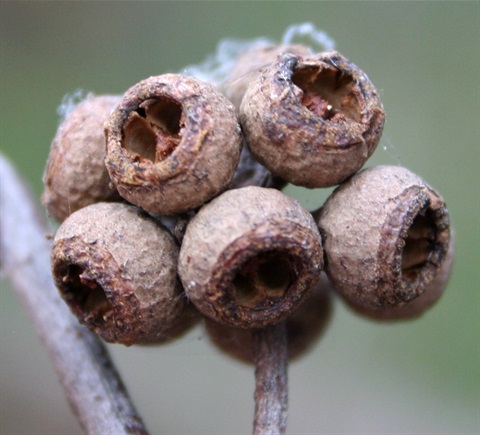
Eucalyptus globoidea
White Stringybark
Upright medium-sized tree, branching 1/3 to 1/2 way up trunk, with a compact canopy. Thick rough fibrous stringy bark to the small branches.
Additional information
- FamilyMyrtaceae
- StoreyUpper storey
- Size10-40 m x 8-20 m
- Plant groupingTrees 5 m +
- LeavesJuvenile leaves hairy at first, becoming rough, stalked, egg-shaped with wavy edges, to 10.5 cm x 6 cm. Glossy lance-shaped adult leaves with sparse network of veins, 7.5-12 cm x 12-25 mm.
- Flower colourWhite
- Flowering timeSeptember to January
- FlowersCluster of 11-15 stalkless, tapering buds on flattened common stalk, cap pointed. White flowers. Broad hemispherical to roundish fruit with disk below rim and 4 valves at rim level.
- Bird attractingGeneral - food and habitat
- Butterfly attractingFood plant for caterpillars
- Frog habitatNo
- Growing conditionsMoist well drained soils in open forests of the foothills. Tolerates light frost. Full sun, semi shade. Limited distribution within the Shire.
- Garden useUseful shade tree for large gardens. Honey production.
- Commercially availableIndigenous nursery
- Conservation statusSignificant within the Shire. Known from very few local sites. More common in other areas of Victoria.
- Aboriginal Use Eucalypts provided food, medicines, containers, string and tools.
Photo Gallery
Photographer/s: 1 Peter Kinchington ©; 2, 3 Helen Moss ©; 4, 5 Marilyn Bull ©
Plant Communities